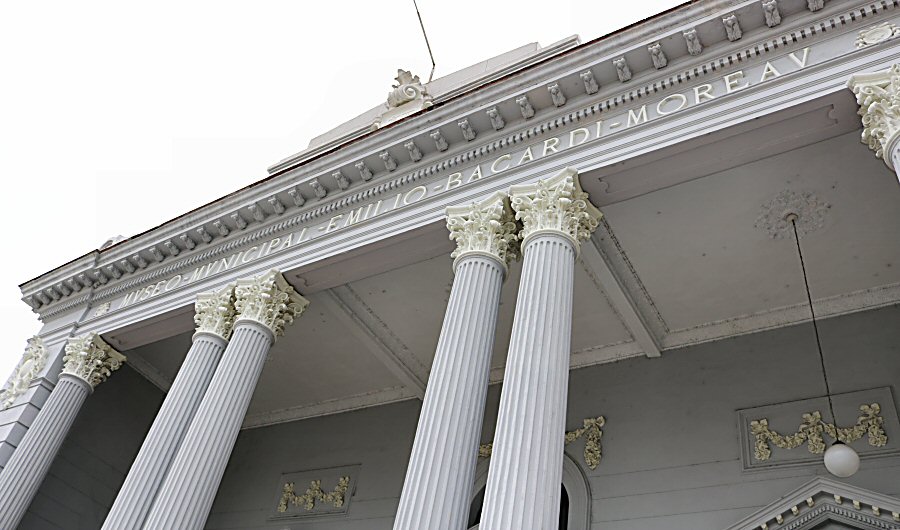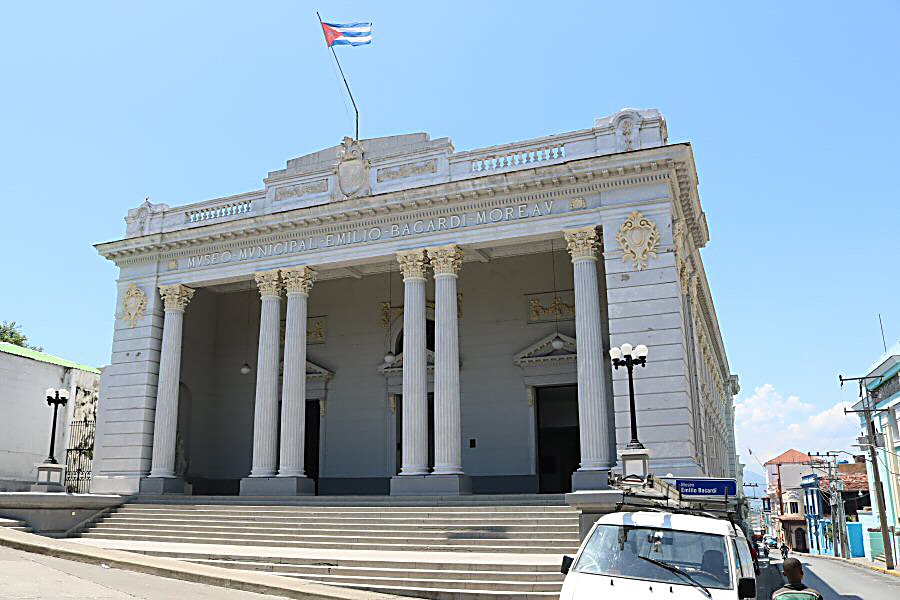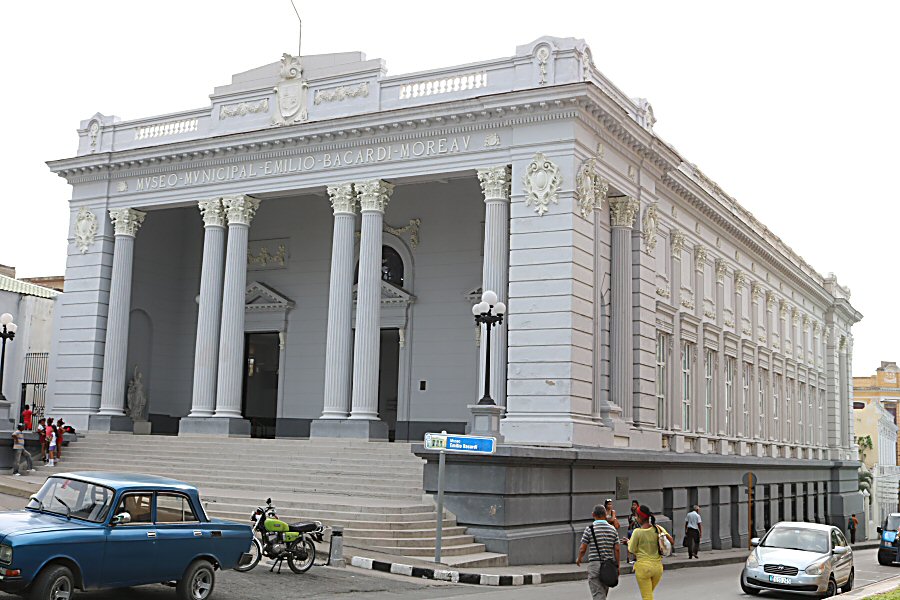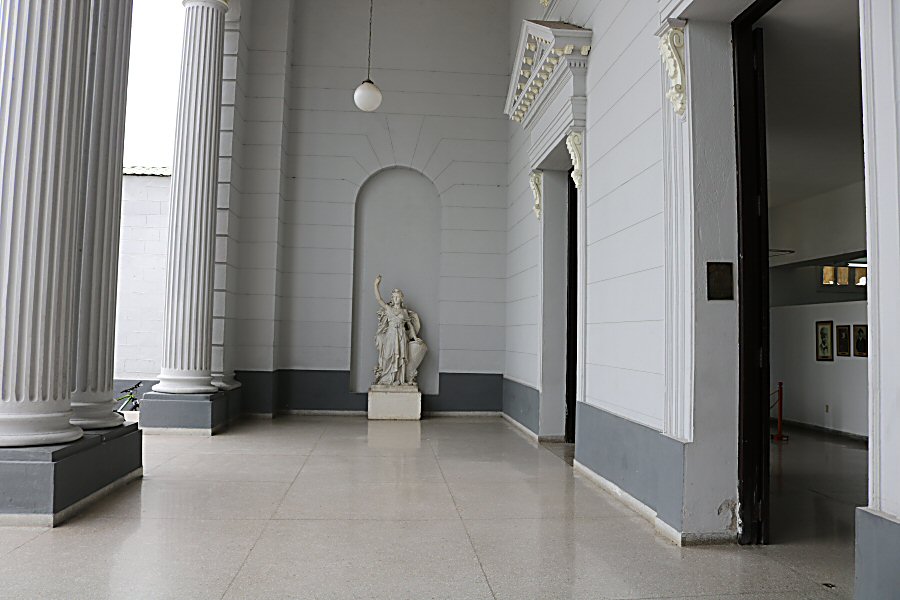Museo Emilio Bacardí Moreau is located on the
Prol de Pio Rosado Street #552 where it connects with the
Aguilera Street.
Monday -Thursday 09:00
- 17:00 Friday 09:00 - 13:00
Saturday 09:00 - 19:00, Sunday 09:00 - 17:00


Of all the museums in Santiago de
Cuba, by far the most essential is the solemn Museo Emilio
Bacardí Moreau (Museo Provincial Bacardí Moreau). It is the first institution of this type opened
in Cuba.
In 1899 Emilio
Bacardí Moreau, the mayor of
Santiago de Cuba and the patriarch of the Bacardí rum dynasty,
initiated founding a museum to exhibit his vast collection of
artefacts amassed over the previous decades. It was opened with
the name of Museum and Public Library of Santiago de Cuba.
Emilio Bacardí Moreau got in touch
with the members of the Liberating Army and ex-officials of the
Spanish Army and persuaded them to donate the relics of the
Independence War, so that the collections of the museum were
enriched by these objects. On the other hand, during the War of
Independence in 1895, the Spanish government organized the
arrival of a collection of European paintings from the Prado
Museum in Cuba, to reduce the stressful atmosphere of the
contest by such exhibitions and artistic activities. Bacardí
succeeded to add some of these paintings to the collections of
his museum. The set consisted of paintings by the German
neoclassical painter Rossler, by the Italian Guido Reni, and the
Spaniards Juan Pantoja de la Cruz and Federico de Madrazo.
The main façade
that looks to the Pio Rosado Street, has an impressive wide
staircase that gives access to a portico surrounded by fluted
columns of Corinthian style. Three superb doors of precious wood
allow the entrance to the interior of the building. The lateral
façade that looks to the Aguilera Street is decorated profusely
by attached pilasters, spans of windows framed by ledges,
cornices, small entablatures, and garlands.


